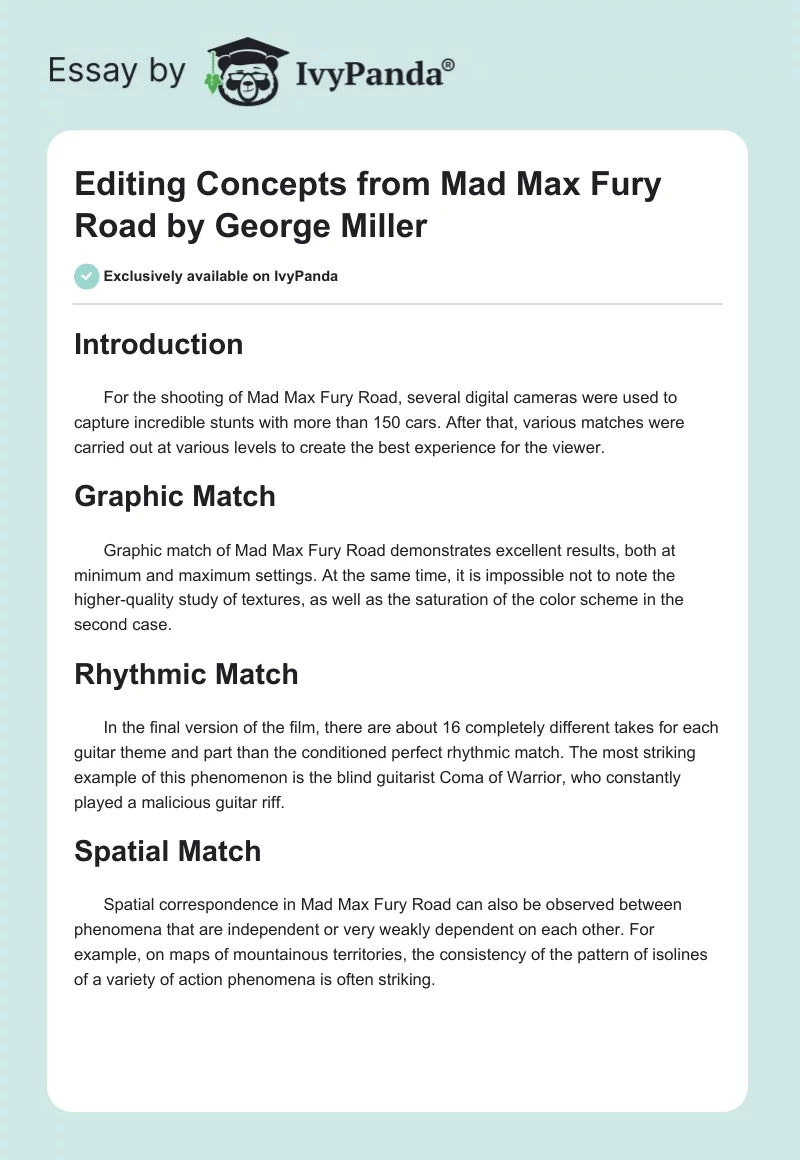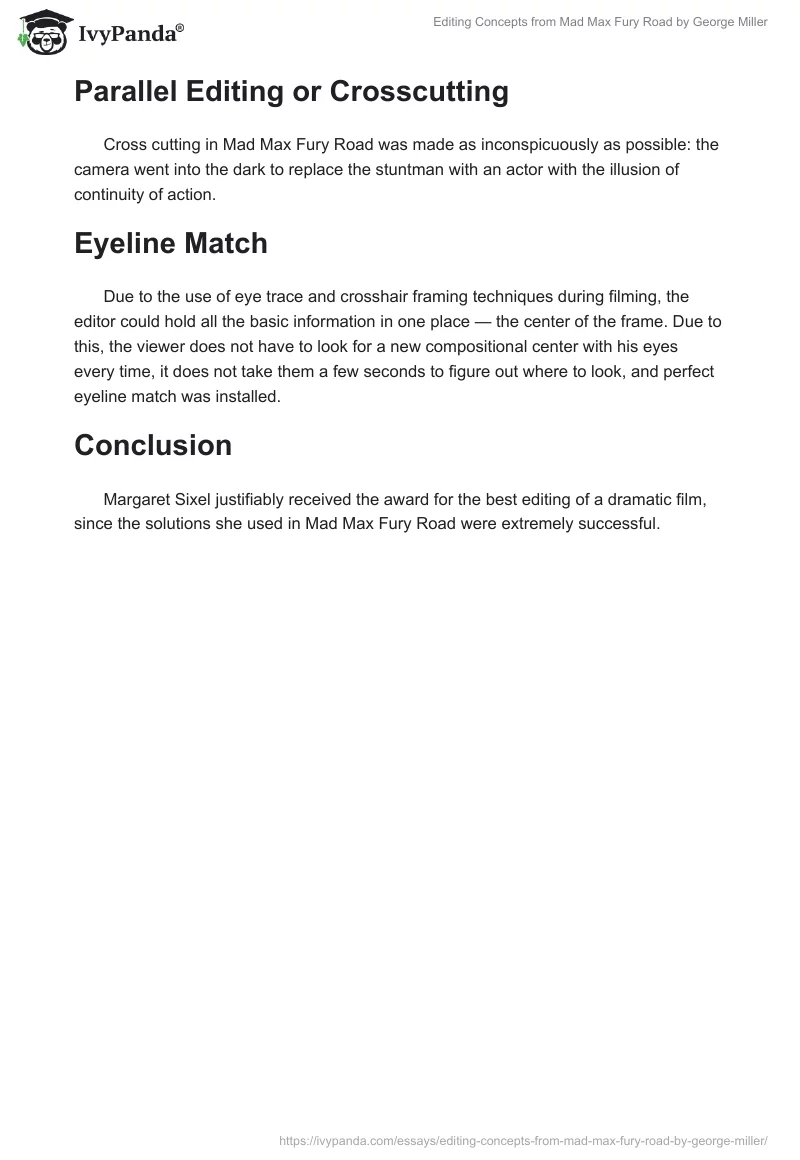Introduction
For the shooting of Mad Max Fury Road, several digital cameras were used to capture incredible stunts with more than 150 cars. After that, various matches were carried out at various levels to create the best experience for the viewer.
Graphic Match
Graphic match of Mad Max Fury Road demonstrates excellent results, both at minimum and maximum settings. At the same time, it is impossible not to note the higher-quality study of textures, as well as the saturation of the color scheme in the second case.
Rhythmic Match
In the final version of the film, there are about 16 completely different takes for each guitar theme and part than the conditioned perfect rhythmic match. The most striking example of this phenomenon is the blind guitarist Coma of Warrior, who constantly played a malicious guitar riff.
Spatial Match
Spatial correspondence in Mad Max Fury Road can also be observed between phenomena that are independent or very weakly dependent on each other. For example, on maps of mountainous territories, the consistency of the pattern of isolines of a variety of action phenomena is often striking.
Parallel Editing or Crosscutting
Cross cutting in Mad Max Fury Road was made as inconspicuously as possible: the camera went into the dark to replace the stuntman with an actor with the illusion of continuity of action.
Eyeline Match
Due to the use of eye trace and crosshair framing techniques during filming, the editor could hold all the basic information in one place — the center of the frame. Due to this, the viewer does not have to look for a new compositional center with his eyes every time, it does not take them a few seconds to figure out where to look, and perfect eyeline match was installed.
Conclusion
Margaret Sixel justifiably received the award for the best editing of a dramatic film, since the solutions she used in Mad Max Fury Road were extremely successful.


